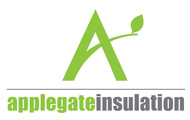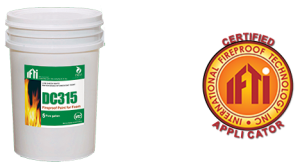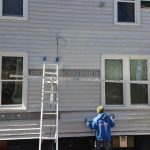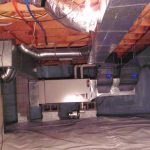Products Installed, Literature, & Technical Data
Spray Foam:

As certified installers of Icynene, Lapolla, NCFI, we can install any of their product offerings. Our experience with each of these companies has been positive and we believe each offer high-quality products. Out of these companies’ wide product offerings, we have made the decision to specifytwo products in our quotations/estimates: Icynene ProSeal v3 for closed-cell foam applications, and Icynene Classic Plus for open-cell foam applications.
We specifically switched to these Icynene productsbecause we believe it to be safer to work around. The two above-mentioned products utilize a low-VOC formula that permit re-entry and re-occupancy times which are the lowest in the industry–1-hour re-entry, and 2-hour re-occupancy, whereas most (if not all) others require a 24-hour ventilation periods before re-entry/re-occupancy. This is a huge advantage over other spray foams since it has a far less disruptive effect on the activities of other trades and the people who regularly occupy the structures we insulate.
Icynene is an industry leading manufacturer of premium spray foam insulation. Click here for information about this company. Note that Icynene has recently merged with Lapolla, and will soon be known as “Icynene Lapolla”.
Injection Foam:

Injection foam refers to the foam material we use to inject into confined cavities—most usually stud-cavities of walls, rafter-bays of vaulted ceilings, cinder blocks, and wythe cavities behind brick walls. The foam is usually injected through a vinyl hose (as is the case with larger cavities) or a small nozzle (as is the case with block and wythe cavities).
We are manufacturer trained and certified installers of Applegate injection foam products. Injection foam is also known as aminoplast foam, foam-in-place, or, generically, as retro-fit foam. It is chemically different than the polyurethane spray foams we install; it is water-based. It also requires different equipment to install.
This manufacture offers a residential foam (R-Foam) and a commercial foam (C-Foam). They both have an R-value of 4.6/inch and do an excellent job of reducing drafts in old buildings while adding R-value.
For more information about Applegate Foam, please click here.
Blown Fiber:


We offer both cellulose and fiberglass blown-in insulation for attics, sidewalls, and floors. Each has advantages depending on the application. For cellulose, we install Applegate’s Loose-Fill cellulose. For fiberglass applications, we install CertainTeed UltraComfort.
Intumescent Paint:

Code sometimes requires that spray foam insulation be covered with an ignition barrier or 15-minute thermal barrier. Usually this is ½” drywall or ¾” wood, but often these paneling products cannot be practically installed (such as in crawlspaces or certain ceiling applications). An alternative exists, which is known as intumescent paint. It is an advanced paint that, in the presence of fire, creates a charcoal barrier that prevents the foam from catching fire for an additional 15 minutes.
International Fireproof Technologies has created a product called DC315. It is the most widely used and specified intumescent paint on the market. We are certified applicators of DC315.
Literature and Technical Data
Open Cell Foam: Icynene Classic Plus
Injection Foam: Applegate R-Foam
Cellulose: Applegate Loose-Fill
Fiberglass: Certainteed UltraComfort
Intumescent Paint: IFTI DC315




